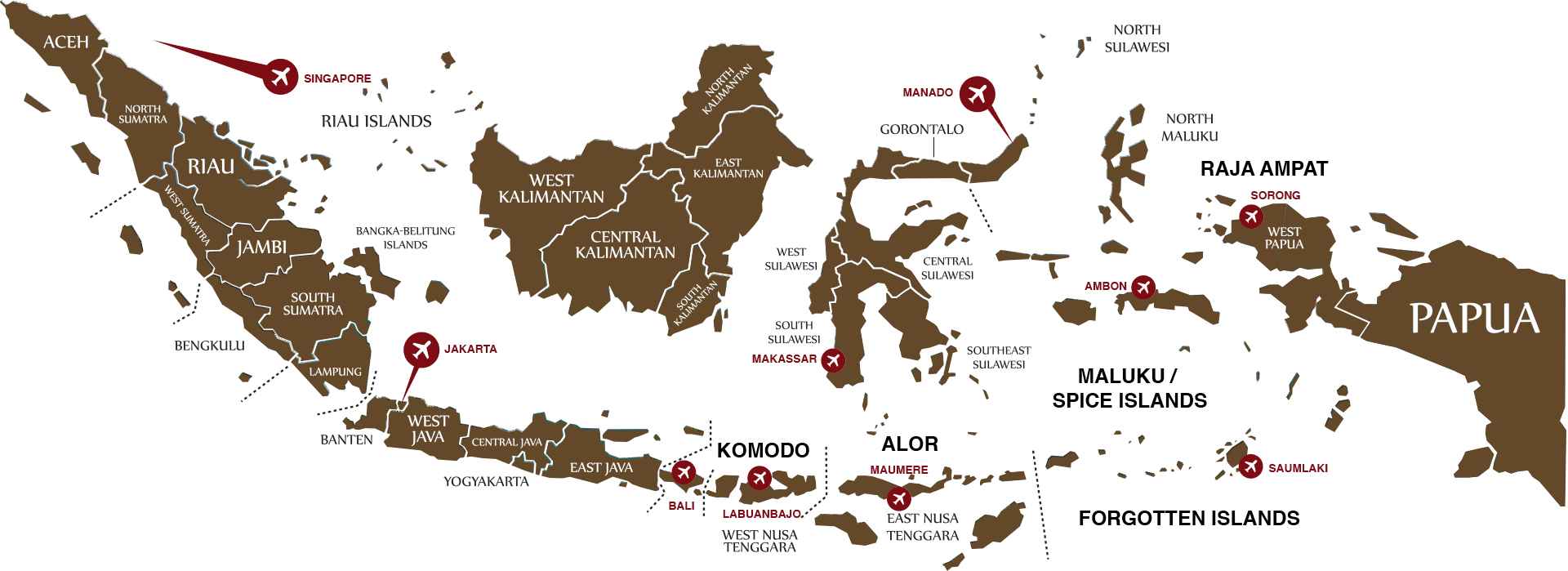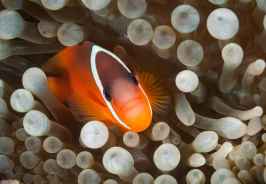Aguila
Arenui is a new top-notch 140-foot boutique liveaboard with all the comforts and service you can expect from a luxury vessel. There are eight cabins for a maximum of 16 guests. Each cabin is slightly different and tastefully furnished with handicrafts from each of the Indonesian provinces. All cabins are exceptionally large and have private bathrooms, individually controlled air-conditioning, small refrigerators and safety boxes. Two master cabins on the upper deck have large windows with sea views, king-size beds and sofas that turn into single beds if necessary. The lower deck cabins each have three portholes.
Arenui’s extraordinary meals are served a-la-carte and feature fresh local ingredients transformed to gourmet delicacies by internationally trained chefs – and the wine selection is impressive! Common areas were carefully designed to create intimate yet roomy atmosphere. A full range of massage and spa treatments are offered by the spa, and there is a computer plus 2 iPads with internet when signal is available, and a great selection of books and movies for your entertainment. Divers will enjoy a large dive deck, individual charging stations and photo editing software. Diving is done from two dinghies. Arenui offers Nitrox.
The Arenui has been designed to host a maximum of 16 passengers in 8 exceptionally spacious cabins (starting from 19 squared meters).
All cabins have been luxuriously furnished in a sophisticated and tasteful manner. The cabins’ individual themes and styles were inspired by handicrafts from each of the Indonesian provinces.
Each cabin has a private en-suite bathroom and individual air conditioning. A king-size bed or roomy singles and a distinct lounge area guarantee maximum comfort and ensure that our guests never feel crowded. The Arenui can be your private sanctuary and second home, but one located amidst a constantly changing tropical landscape!
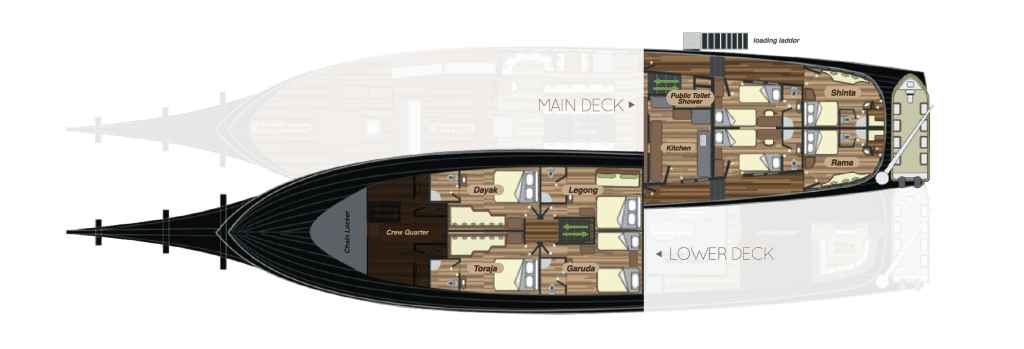
Specifications
Length (LOA): 43 m
Beam: 9 m
Draft: 3.75 m
Displacement: 300 tons
Engines: Mitsubishi marine 10 cylinders 440 HP
Electronic Appliances: radar 35 MM Furuno, echo sounder Furuno, GPS Furuno, WHS SSB Radio, Ericsson satellite phone, TV & Music system
Cruising Speed: 9 -11 knots
Safety: 2 * 20 persons inflatable life rafts, life jackets (40 pcs), buoys, safety flares, smoke detectors in each cabin, fire extinguishers, first aids equipment, oxygen onboard, hyperbaric chambers in Bali, Makassar, Manado and Jakarta
Diesel Generators: 1 * Mitsubishi 60 KW ~ 1 * Mitsubishi 20 KW
Available Voltage: 220 Volt, 50 Hertz avalaible for cabins ~ 110 Volt available in the camera room
Water Tank: 10,000 liter + desalination unit (capacity 7,000 liters per day)
Fuel Tank: 10 tons
Scuba Tanks: 30 * 11 liters tanks. 4 * 15 liters tanks
Compressors: 2 Bauer Mariner, Nitrox membrane system available
UW Photography: Individual charging stations
Guest Accommodations: Max 16 guests, 8 double-twin cabins, on request possible third bed for families or groups,
Cabins: For each cabin: min 19 squared meters, sofa' area or desk, private toilet with window, hot water shower, individual AC, minibar and safety deposit box
Crew: 24 crew members
Tenders: 2 fiberglass dinghy (8 mt each) with outboard 40 HP Yamaha engine / 1 inflatable rubber boat (6 mt)
Safety
Safety is a top priority on the Arenui. All precautions have been taken to ensure that the Arenui fully complies with current international safety standards.
The Arenui is dry docked every year so that the hull can be stripped and repainted while the main engine and generators are fully serviced. In addition, the vessel frequently receives additional maintenance as part of its regular daily operations. All of this is to make certain that the highest standards of reliability and safety are met.
We consider your security and safety while on board our priority. This includes providing an efficient crew, led by a qualified captain with experience on domestic and western cruise ships, and the most up-to-date navigational and safety equipment.
– Life rafts
– 2 x 8 meter dinghies
– VHF & SSB radio
– Global Positioning System (GPS)
– Radar
– Echo sounder
– Satellite telephone
– Mobile telephone and satellite internet access (when within range)
– Complete first-aid kit
– Oxygen kit
– Life jackets in each cabin
– Smoke detectors and extinguishers
Dive insurance for passengers is not included. All guests must purchase their own diving insurance if they wish to dive with Arenui. We highly recommend all guests purchase comprehensive travel and medical insurance.
SAMPLE CRUISE ITINERARY "GRAND KOMODO"
12 Day/11 Night Bali-Bali Cruise
Day 1 Embarkation in Bali
Day 2 Moyo Island/Satonda (2-3 dives)
Moyo is a small island, inhabited by around 6,000 people, located in the West Nusa Tenggara province off the northern coast of Sumbawa. There are spectacular coral formations and crystal clear waters that make for great diving.
Angel Reef
This site lies off the west coast of Moyo and consists of a healthy coral reef with a vertical wall dropping to over 40 meters / 120 feet in depth. Angel Reef has huge elephant ear and barrel sponges along the wall. It is teeming with long fin banner fish and red tooth triggerfish. Search the sea fans here for a chance to see the Denise pygmy seahorse.
Panjang Reef
Located just north of Angel Reef is the submerged coral reef of Panjang Reef - ‘long reef’. The huge coral garden plateau is covered with pulsing soft corals, surrounded by a sloping reef full of big sponges and healthy hard corals. Bargibanti pygmy seahorses, leaf scorpion fish, ribbon eels and sea snakes can all be seen here.
Satonda Reef
Underwater the sloping reef and sandy bottom hide a large array of critters. An early morning dive provides a great opportunity to search for giant frogfish nestled in the sponges, or mushroom coral pipefish snaking among the fronds of the mushroom coral. Nudibranchs, pipefish, even ghost pipefish and Bargibanti pygmy seahorses are regularly seen here.
Day 3 Bima (4 dives)
Bima is a busy port on the northwest end of Sumbawa Island with world class muck diving. We spend the whole day here enjoying the hunt for the most rare and elusive critters.
Unusual Suspects
This muck dive is full of weird and wonderful critters. Starting in the south, the black sand is covered in sponges with frogfish, tiger shrimps and seahorses making their homes there. Fire sea urchins house Coleman shrimps and zebra crabs and ghost pipefish are a regular find. Continuing north, huge soft corals grow out of the sand and shelter beautiful cowries. The sandy slope turns into a rocky area where juvenile pinnate batfish, harlequin sweetlips and barramundi cod wiggle around. Thorny seahorses, seamoths, stonefish, razor fish and even wunderpus, mimic and blue-ringed octopus can be found in the next section of sandy slope. The reef comes alive at night with the entire sea floor covered in all shapes and sizes of shrimps and crabs with a chance to see Spanish dancers, harlequin shrimps and bobtail squid. Other cephalopods come out at night so look for coconut, white V and algae octopus as well as long fin squid.
Day 4 Gili Lawa Laut (4 dives)
Two celebrated dive sites await you, just north of Gili Lawalaut Island. Crystal Rock and Castle Rock are both incredible locations, boasting the key elements for any impressive dive site: a wide variety of healthy corals covering the reef, plus tons of fish - both big and small and all sizes in between! There are two more exhilarating dives in this area, El Toro and Gili Lawalaut Lighthouse, along with good night dives on healthy hard coral reefs off the island of Gili Lawa Darat. Between the dives there is a chance to visit Gili Lawalaut Island and take a short trek to the top of the hill for a wonderful view over the Komodo-Flores channel.
Crystal Rock
The rock jutting out of the surrounding crystal clear waters explains how this site got its name. But what is truly memorable here are the large schools of fusiliers and anthias flitting over the gorgeous soft corals and impressive table corals. In the deep blue, you can also see at times large tuna, mackerel and other fish schooling around a small mound to the northwest. A lone eagle ray is often spotted here cruising in the currents.
Castle Rock
Castle Rock is a submerged pinnacle situated a kilometre further north from Crystal Rock. Its exposed location means strong currents but experienced divers will love the thrills to be had on this dive. In fact, the main action comes from watching the staggering amount of fish such as batfish, groupers, midnight snappers and impressive schools of fusiliers and surgeons whipping past. Of course, divers aren’t the only ones interested in the huge amount of fish here, which explains the giant trevally as well as whitetips, blacktips and grey reef sharks hunting around for their next meal.
El Toro
The channel between Gili Lawa Laut and Gili Lawa Darat forms a dive site with interesting topography. The dive starts with a drift along a sloping reef and sandy bottom. Corals heads shelter crocodile fish and lionfish hunting in the small schools of glassfish. Pygmies and frogfish have been seen here as well eagle rays and reef sharks. The dive site then shallows out with the ‘bull ring’ circle opening out and ending in a flat rock plateaux. There is also a chance to see manta rays playing in the surface currents.
Gili Lawa Laut Lighthouse
On the north of Gili Lawa Laut there is a lighthouse at the end of a long reef. When the tide is going down the dive starts on the reef with a drift to the corner. At the corner there are big schools of batfish, snappers, surgeons with napoleon wrasse and reef sharks also hanging around.
Day 5 Komodo-Flores Channel (4 dives)
Currents in this area can be quite strong and we have to dive according to the tides. There are many dive sites and the sites chosen will be dependent on the currents. Finish the day with a great night dive at Wainilo. Komodo is an excellent place for spotting macro critters and the reefs and corals are spectacular too.
Takat Makassar
This is an exhilarating drift dive along the shallow flat bottom interspersed with patches of coral reef teeming with life. There are chances to see manta rays, turtles, eagle rays and white tip and black tip reef sharks.
Batu Bolong
Underwater this rock is covered in a huge amount of soft and hard corals and full of fish life. In the shallows watch anemone fish and look out for turtles munching on the corals. Giant trevally, white tip reef sharks, snappers and emperor fish tend to congregate here. This site presents particularly good opportunities for both macro and wide-angle photography.
Tatawa Besar
This is a thrilling drift dive that starts off from the northwestern tip of Tatawa and continues down the western side towards 15 to 20 meters of depth. The surrounding fish life is profuse and you will see an endless field of stunning orange soft corals as you glide along. Swim past coral heads inhabited by schools of sweetlips and batfish and look out for turtles feeding on the reef. Mantas have been encountered here as well.
Tatawa Kecil
The West side of this small rocky outcrop presents a fantastic underwater terrain with enormous slabs of rock that have been worn down to form channels, canyons, caves and swim-throughs. On the north plateau crocodile fish lie on the scenic reef among a whole host of reef fish and schooling fusiliers.
Batu Tengah
This dive site is located in the middle of the Komodo National Park, 12 nautical miles to the north and 12 nautical miles to the south. The translation of Batu = Rock, Tengah = Middle. With a slope to the east of the site and a coral garden to the west Batu Tangah is a beautiful site where we often get to see turtles, cuttlefish and juvenile white tip reef sharks that hide under the table corals among the hard coral garden. Napoleon wrasse and big groups of snapper swimming on the slope with all the colourful decoration of the soft coral make Batu Tengah a high quality dive site.
Wainilo
This night dive is situated off the north of Rinca Island. In the shallows, the hard coral reef is home to many different critters, including juvenile harlequin sweetlips and batfish. Away from the reef, the sandy slope is scattered with pulsing soft corals that hide demon stingers and starry night octopus, plus a moray eel that has not yet been classified by scientists and is only found here in Wainilo.
Day 6 Walk with dragons/Padar Island (2 dives)
Loh Buaya (walk with dragons)
Your day will begin with an exciting visit to Komodo National Park where you will be able to take a stroll with the famous dragon! As you walk along the paths, also stay on the lookout for deer, wild boar and birds in addition to the giant lizards. After the walk we move to Padar Island for two dives.
The water temperature here and in the southern dive sites over the next few days can be a little cooler dropping from the normal 28/29 degrees Celsius (82-84 Fahrenheit) to a possible 20 Celsius (68 Fahrenheit). Also due to the infinite nutrients in the water creating the amazing biodiversity in this area the visibility can sometimes be a bit greener. Neither one of these factors can spoil the amazing diving to be had in these areas.
After the second dive we visit one of the most incredible beaches in the Komodo National Park. A short walk brings us to the pink sandy beach. During this walk we also have the opportunity to see enjoy incredible views of the National Park with the sunset.
Three Sisters
The site here are full of interesting and beautiful features, such as massive steps and huge towers of stone, all wrapped in hard and soft corals and dotted with nudibranchs, small caves and overhangs. Reef sharks and humphead parrotfish are among the bigger creatures we see in this area. There is also a towering coral spire with a small cave at the bottom, where huge lobsters are often found hiding. Look for the tiny lady bugs on the soft corals and the resident frogfish sitting in the sponges.
Secret Garden
Is one of the top dive sites at Padar Island. As the name of the dive site suggests it has a beautiful coral garden of black coral along a mini wall covered with soft corals. There is a resident school of mobula rays that seem to like swimming through the dive site giving good opportunities to the divers to see them. Nudibranchs, leaf fish, frogfish and the incredible sea apples can be seen here too.
Day 7 Rinca Island (4 dives)
Horseshoe Bay is in the south of Rinca Island and we spend the whole day here. Here we dive the famous Cannibal Rock, one of the top ten dives sites in the world according to some diving publications. Watch dragons, wild pigs, deer and monkeys roam the beach and take a tender ride or kayak to get a closer look.
Cannibal Rock
This outstanding dive site covers a large area with sandy slopes in the north, deep mini walls in the east, a plateau full of life in the south and rocky areas in the west. The nutrient rich bay creates the most spectacular congregation of hard and soft corals in all parts of the dive site. Sponges, ascidians, sea squirts and tube anemones are abundant. A great diversity of nudibranchs can be seen here, along with frogfish, turtles, cuttlefish and other reef fish too.
Yellow Wall of Texas
As the name suggests this wall at the southern entrance to Horseshoe Bay is covered in yellow and orange soft corals. A tiny critter, the ladybug, comes in its multitudes here. Nudbranchs decorate the wall that usually has a slight current enabling you to slowly drift along and enjoy the view.
Crinoid Canyon
Another wall on the opposite side of Horseshoe Bay with deep bommies covered in soft corals and huge gorgonian sea fans. Here ribbon eels and giant frogfish have been spotted along side the hundreds of crinoid which give this dive site its name.
The Boulders
Inside the bay and opposite Yellow Wall of Texas there are large rocks that continue underwater to create places for large rays to rest and even sometimes nurse sharks hide in these underwater crevices. The boulders are covered in corals becoming a paradise for marine life. The elusive Rhinopias have been found here before.
Torpedo Alley
A marvelous night dive named after the pancake sized torpedo rays that can be found here. Coconut octopus, seahorses, colourful squid and the bizarre bobbit worm all live in the black volcanic sand. A very shallow dive with a maximum depth of 10m/30ft, spend time looking for all the strange inhabitants among the rocks, soft corals and in the sand.
Day 8 Manta Alley/Pink Beach (4 dives)
Manta Alley is located on the south end of Komodo Island. After two dives looking for manta rays we head up to the middle of Komodo Island to the Pink Beach area.
Manta Alley
Manta Alley is located in Tora Langkoi Bay along the south coast of Komodo. The dive site in fact barely pierces the ocean’s surface at the end of a line of rock islets. As can be guessed from its name many manta rays are known to frequent this site and it is the most popular one in Komodo for spotting them. The area can be described as a deep gully that works as a funnel when the tide changes, causing the water to rush through at speeds of up to three to four knots with the fall and rise of the tides and up to one knot even during "slack water" periods. Watch the mantas being cleaned on the North side or enter the ‘Alley’ to see them hover effortlessly in the current.
Pink Beach
The simple topography makes this site an ideal afternoon dive. A mini wall can be found in the middle of the reef, where clouds of glassfish swarm in the cracks and crevices. An abundant amount of fish life and unusual critters make their home here, including leaf scorpionfish, crocodilefish, nudibranchs and frogfish. On one side of the wall is a sloping coral reef full of life. On the other is a sandy area with healthy staghorn corals growing and providing shelter for juvenile harlequin sweetlips and mandarin fish.
Loh Liang Bay
This white sand muck dive is around the corner from Pink Beach situated inside Loh Liang Bay on Komodo Island. Search for all sorts of critters here - bobtail squid, flamboyant cuttlefish, frogfish, nudibranchs, Ambon scorpion fish, cockatoo waspfish and large moray eels living in the shallow rocks.
Day 9 Gili Lawa Laut / Gili Banta (4 dives)
This is our the last chance to enjoy the action at Castle and Crystal Rock before leaving for Batu Montjo and Gili Banta, an island on the outskirts of Komodo National Park.
Batu Montjo
In the northwest of Komodo Island, Batu Montjo is a perfect site to dive as a third dive with a amazing formation of hard corals in the shallows. Many boulders covered with gorgonian sea fans lie in between the white sandy slopes. This combination of hard corals and gorgonian sea fans with all the fish swimming in between the coral garden makes for a perfect relaxing afternoon dive. Pygmy seahorses, leaf fish, jaw fish and turtles are often seen at this site.
Gazor Beach
This night dive is at a white sandy slope, in a calm bay on the north of Gili Banta. Elusive stargazers hide in the sand, with only their big eyes and toothy snarl looking up into the stars. White V octopus, strange translucent nudibranchs and ghost pipefish can also be found here. Hungry lionfish follow your lights, hunting the stunned cardinalfish and a huge resident stonefish buries itself in the sand.
Day 10 Sangeang Island (4 dives)
The island of Sangeang is located northeast of Sumbawa. It’s a fairly small island but you’ll notice it right away since most of its landscape consists of Gunung Api, an active volcano. This natural phenomenon has made for some amazing topography, such as steep ridges dripping with hardened lava. There are several excellent dive sites here, all with good visibility, allowing you to truly appreciate the healthy reefs of soft and hard corals as well as different types of anemones.
Hot Rocks
Here the volcano has left its mark below the surface as well. In the shallows observe volcanic bubbles escaping from the seabed through air vents. Put your hands close to the ‘hot rocks’ and feel the heat from the sulphur-covered rocks. Besides the usual tropical reef species ribbon eels, cowries and Bargibanti pygmy seahorses can also be seen here.
Lighthouse Reef
This site presents many contrasts in terms of natural features and marine life. Strong currents can prevail in the exposed areas but there are also sheltered spots. Down around 20 metres macro lovers will be delighted, as the base of the wall and large black sand slope is excellent for spotting countless nudibranchs and other colourful critters. Black coral bushes hide ghost pipefish and saw blade shrimps.
Black Diamond
The rocky formation up in the shallows with fingers of coral going to the deep are covered with black coral and crinoids in any colour you can imagine. The black sand acts as a background to all the colour of this dive site and the corals will stand out in a way that you’ve never seen before. Among the black coral we often get to see one of the most incredible masters of camouflage, the ornate ghost pipefish and as the name suggests any ghost pipefish are a plus for divers. Big reef octopus, peacock mantis shrimps and nudibranchs are also seen here.
Bontoh Reef
Is located in the west part of Sangeang volcano where we have incredible sunsets and for this reason Bontoh Reef is a perfect place to dive as a third dive and night dive. With a very shallow area of black sand and small rocks covered with algae that gently slope down, Bontoh offers one of the biggest populations of spaghetti garden eels coming out from the sand. Among the small rocks is the perfect place for creatures to hide from predators and photographers. Critters spotted here include painted frogfish, juvenile angel fish, mantis shrimps and while we are swimming out in the sand we have the chance to see the wunderpus or mimic octopus.
Day 11 Satonda/Moyo Island (1-2 dives)
On the last full day of the cruise we will make one or two dives depending on the weather conditions and also on the flight times out of Bali the next day. We will dive at either Satonda or Moyo depending on the dive sites covered at the beginning of the cruise. After the dives we will travel over 150 nautical miles back to Bali.
Day 12 Disembarkation in Bali
Total dives: 33-35 dives
6:00-7:00am | Wake up in a remote paradise, head out to the restaurant area and start the day with a small breakfast of toast, pastries, fruit, coffee and juice. One of the cruise directors gives a full dive brief, using two TV screens to highlight the dive site map and a recommended route to explore the reef, and also uses the fish ID books to show photos of the popular critters we hope to see that are special to this site.
8:00am | First dive of the day. Grab rash-guard, mask, booties and fins, then pass crew the camera to put in a plastic basket and take to the tender. Step down into the tender and check over BCD (already waiting for you, setup and ready to go). Quick 2-3 mins ride out to the site, gear up and then back roll into the water. Probably a deeper dive, perhaps a nice slow drift or maybe a good chance to hook onto the sea bed and watch some early morning fish action. Pop up (after safety stop) to find tender waiting at the surface. Head back to boat and crew member hands over a warm towel to dry off!
9.30am | Time for the big breakfast now, with a full spread of hot items and eggs cooked to request (before the first dive you'll be asked how you'd like your eggs so they can prepare and have everything ready after the dive). Relax on the sky lounge, go for a nap in your cabin or complete log books. Thirty minutes before the dive time it's another dive briefing, with map, route, photos.
11:30am | Second dive of the day. Good time to take out the underwater camera and try for some images in good light. Test out some fun sun-burst photos using dive buddy as a model.
1pm | If it's not dive-time then it must be food-time. Lunch is a mouth-watering buffet of local and western food with healthy salads and vegetables to make sure everyone's feeling fit and healthy for the next dive. Perhaps time to pop up to the sky lounge for a short cat-nap, or to read a good book or chat with other guests and crew. Step in to say hello to the captain in the wheelhouse and ask him about the beautiful islands we're sailing past. Back down to the restaurant for a full dive briefing.
3:00pm | Third dive of the day. Fueled by a tasty lunch, drop in for a current dive and try to keep up with the schools of fish
4.30pm | Chef puts out some tasty snacks, savoury and sweet. Try to resist eating too much but it's all so delicious and you have the excuse of needing energy for all this diving! Time to decide whether to do the night dive or not. If not, there's the option of an early dinner so not eating too late.
5:00pm | Find some time between reading, chatting, snacking and looking at photos on the computer, to get a back massage. Fragrant massage oils smell great, mixing with the salty ocean breeze. Now it's decision time; sunset cocktail or a last dive? There's time later for a drink with the stars instead, so head down for a dive briefing to find out what's in store on this night dive.
6:30pm | Fourth dive of the day. Well worth skipping the cocktail, as the reef is alive with weird and wonderful creatures. Eagle-eyed dive guide points out tiny bits of fluff that turn out to be minute species, rarely seen. After the dive, head back to the boat through inky black water under a canopy of stars. Crew member has a hot towel and a cup of hot chocolate ready and waiting!
8:00pm | Take a seat in the sky restaurant on the top deck under the stars, with fellow divers, to discuss the day's highlights, while tucking into the starter laid out at the table. Soup is next, then crew serves up the main course (chosen earlier, at lunch time, from menu that changes daily) and everyone toasts to a great day of diving. After a delicious desert there's time for a short movie. Someone's downloading photos onto one of the computers in the restaurant (windows or mac setup) and having a go at editing the best shots.
9:00pm | Seems like a great opportunity to get some night photos, so try out different settings to get a nice night-sky, starry image. Look out over the peaceful, calm waters. Imagine the activity going on beneath the surface, as night-time critters go about their business. Plan ahead for tomorrow; perhaps take one of the kayaks for a closer look at the islands. There's talk of visiting a village too, to meet some locals and buy some souvenirs. Or maybe another massage!!!
This triangle is home to the world’s most bio-diverse population of marine species with Indonesia representing its hottest spot. Nowhere else has a comparable density, not to mention diversity, of underwater creatures and life been recorded.
In order to fully appreciate the exceptional status of this region, suffice it to say that the whole Caribbean area has only 9% of the corals and 35% of the fish species found in Indonesian waters.
The reason for such a big difference is that the entire area of the Atlantic Ocean underwent a mass extinction of species during the last ice age. All types of corals and animals vanished during this period and the other species never regained the strength of their former numbers.
In Indonesia – the centre of this biodiversity triangle – the variety seen underwater is truly astonishing. In certain bays and around small islands, you can find more species than in the entire Caribbean. In a research report conducted in 1997 on the island of Flores, respected marine biologists Rudie Kuiter and Gerald Allen counted 1,133 species of fish just in Maumere bay. This is still the highest number of species of fish ever counted in a specific area.
In Raja Ampat, the same Gerald Allen, world-famous ichthyologist, counted the incredible number of 284 different species of fish counted during a single dive. In the same area, 465 different species of corals were found. As a result, scientists nowadays believe that this destination is the world’s current no. 1 spot in terms of biodiversity.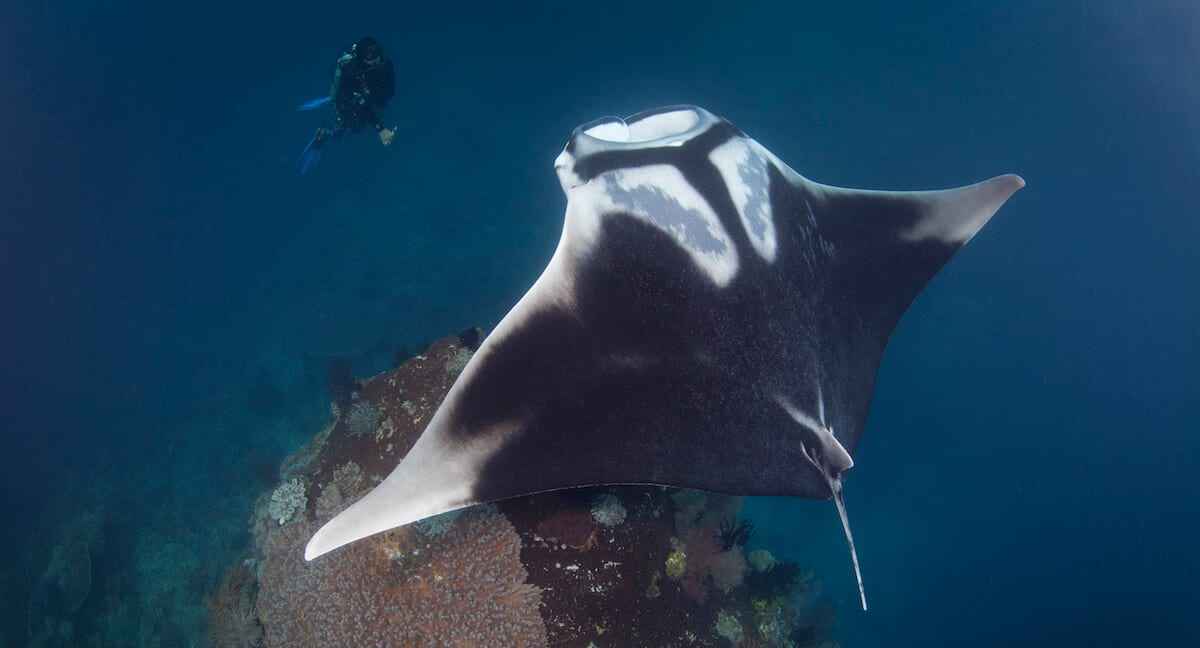
While diving around the Komodo National park, we enjoy excellent muck diving, but also outstanding pelagic action. We offer 7 to 13 night cruises, exploring all the popular dive spots such as Gili Lawa Laut, where we dive at Crystal Rock and Castle Rock (great opportunity to try out a ‘reef-hook’ dive, as you secure yourself to the rock and float in the current, watching the schooling fish and predator/prey action). Plus, we visit a dive site in the shadow of an active volcano to feel the bubbling hot springs, and take a stroll on land with Komodo’s giant lizard population. To sum up, these cruises are all about diversity, with exhilarating drift diving, interesting muck diving, encounters with pelagics (mantas, sharks, whale sharks, sunfish), macro attractions (pygmy seahorses, blue-ringed octopus, frogfish, ghost pipefish), shallow reefs, walls, pinnacles, seamounts, and pristine hard/soft corals.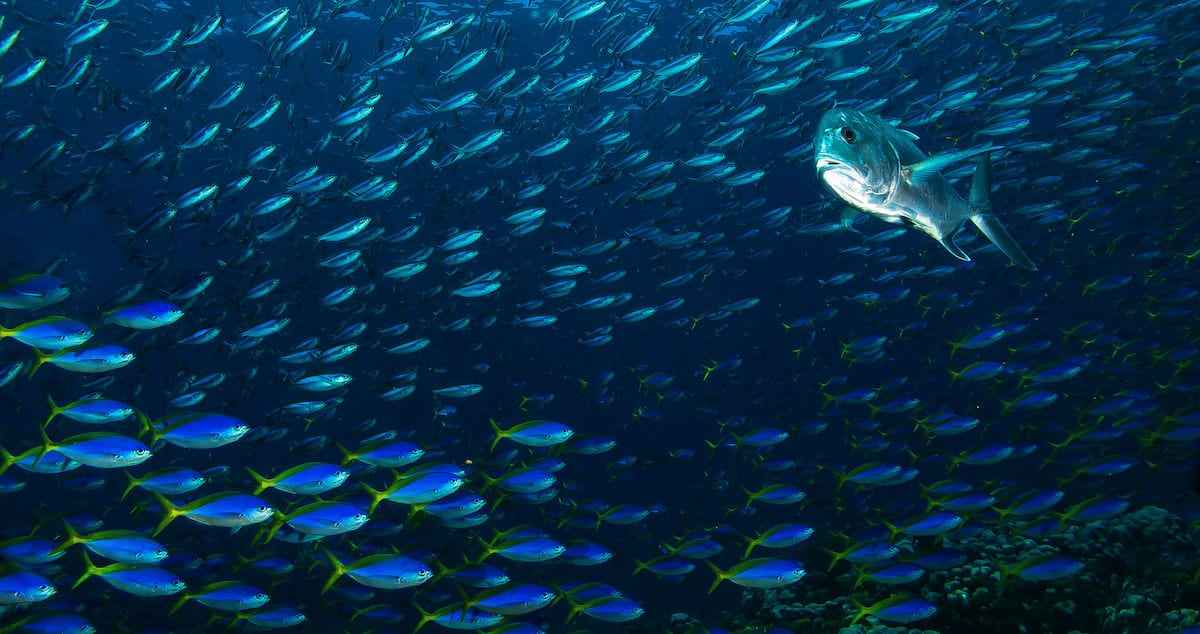
The Raja Ampat season offers various 11 to 13 night cruises, taking in the major dive sites such as Manta Sandy (great for watching and interacting with mantas as they visit the cleaning station), Boo Windows (try out your photo skills at the ‘window’ as your dive-buddy swims through an opening in the submerged rock past a reef draped in soft corals and brimming with fish), Neptune’s Fan Sea (rush along a gulley in the current, past giant colourful gorgonian seafans) and Arborek Jetty (famous for pipefish, cuttlefish, octopus and giant clams, plus the newly discovered Pontohi pygmy seahorse). This area is known for its vibrant underwater colours but also its majestic landscapes, making it a perfect destination for keen photographers. The only problem with diving here is that you’ll be so spoiled by the near-perfect conditions that you may never want to leave.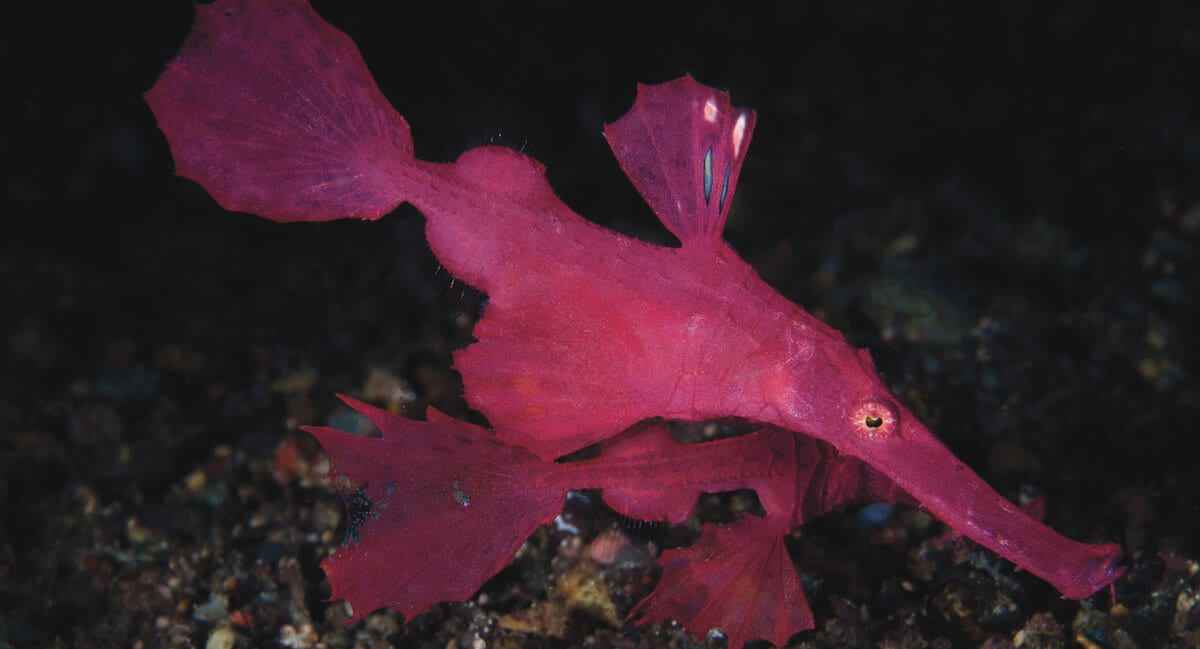
Other world-class hubs of biodiversity include Flores, Alor, Southern/Central Maluku and the Banda Sea, to name just a few.
It’s no surprise that these hotspots are considered among the ultimate destinations for divers.